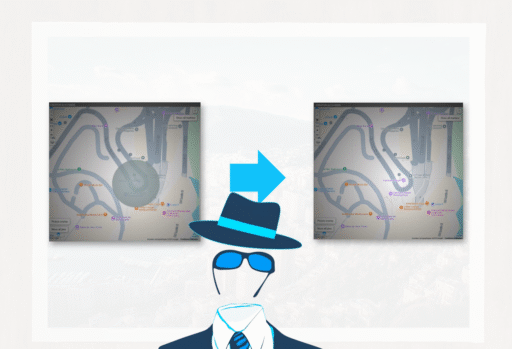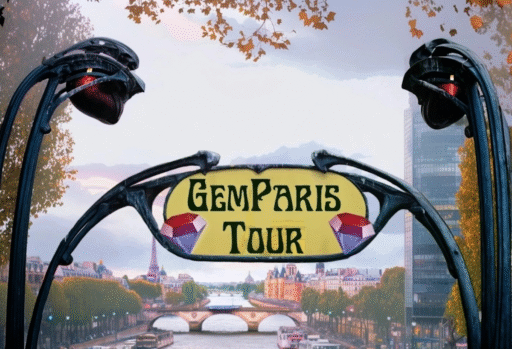Starbucks’ gamification wasn’t there from the beginning of its story but it made it a success. Starbucks’ first store was inaugurated in 1971 at the Seattle Pike Place Market. Entering the shop, you were able to find fresh coffee beans, tea, and spices from around the world. According to the company, this flavour journey and the coffee trade traditions are used during this flavour journey and the coffee trade traditions are, according to the company, at the origins of the name “Starbucks”. This Mobi-dick character name reflects perfectly the worldwide ongoing success. By 1987, Starbucks had become a coffeehouse and it expanded to Chicago, Vancouver, and other cities across north-America. Later on, It opened stores worldwide like in Japan, Europe, and China. Hence, nowadays, Starbucks is the meeting place for millions of customers each week. Let’s discover the marketing secrets of such success!
I. Engaging the Senses: Starbucks’ Gamification Strategy Unveiled

A. Gamification in Loyalty Programs
Gamification has emerged as a popular strategy to revitalize loyalty programs and make them more engaging for customers. Starbucks is one company that has successfully implemented elements. Such Elements are reward points for purchases, level-ups based activities, and challenges for customers to complete. As a result, Starbucks has seen a significant increase in customer retention. Their customer retention rate is of 44%, significantly higher than the industry average of 25%. The gamified loyalty program has also increased customer engagement. Customers are more likely to make repeat purchases and try new products. In fact, they are incentivized through the gamification elements to reach new levels and earn rewards. Businesses can benefit greatly from incorporating gamification elements into their loyalty programs. Gamification marketing keeps customers engaged, happy, and coming back for more.
B. Star Dash and Starbucks for Life
Starbucks has introduced two popular loyalty programs to incentivize customers and increase customer engagement. The Star Dash program encourages customers to visit Starbucks more frequently. It offers bonus stars for a certain number of purchases made within a specific timeframe. While the Starbucks for Life program provides customers with the chance to win free coffee for a year, a month, or a week by completing challenges and earning game plays. So, by incorporating gamification elements and offering unique rewards, Starbucks has created an immersive and entertaining experience for their customers, keeping them engaged and coming back for more. These innovative programs have increased customer retention, engagement, and satisfaction, establishing Starbucks as a leader in the coffee industry.
C. Summer Game, Starland, and Roastery Challenge
Starbucks has created other even more innovative gamified loyalty programs to enhance customer engagement and satisfaction. The Summer Game program incentivizes customers to win prizes by completing unique challenges, while Starland enables customers to collect stars and earn rewards by making purchases. Launched during the pandemic, Starland provided a fun and interactive way to connect with the brand during a difficult time. Finally, the Roastery Challenge is a VR and AR experience that encourages customers to explore Starbucks’ roasteries, enhancing their knowledge and interest in the company. These programs, alongside Star Dash and Starbucks for Life, have successfully established Starbucks as a leader in customer engagement and retention.
II. The Café Games: Starbucks’ Use of Gamification Inside Shops

A. Coffee Education
Starbucks uses gamification techniques to make the coffee education experience more interactive and enjoyable. In the Coffee Passport program, customers earn stamps for trying different coffee blends and receive a free coffee bag once they fill up their passports. Also, the Coffee Master program for baristas incorporates gamification by using badges to reward achievements in coffee knowledge, brewing techniques, and tasting skills. Baristas who complete the program earn a special black apron. Finally, in the Coffee with a Barista program, customers attend virtual or in-store sessions to learn about coffee brewing techniques and participate in a quiz to win a free drink.
B. Interactive Art
Starbucks uses gamification techniques to increase customer engagement and foster a sense of community within its stores. The “user-generated content” gamification element is used in the chalkboard mural where customers are encouraged to interact with the brand by drawing and writing messages. Similarly, the “social interaction” gamification technique is employed through the use of community tables to encourage customers to engage with each other through conversing and playing together. Finally, the “progression and rewards” gamification element is used in the digital flywheel program. It is a gamified loyalty program that rewards customers for their purchases with progress bars, rewards badges, and personalized offers. These techniques provide customers with a sense of achievement and reward, motivating them to keep engaging with the brand.
C. Digital Games
Starbucks has created several digital games that use gamification techniques to engage customers and increase loyalty. “Starbucks Pairs” is a memory game featuring Starbucks products that can be played on mobile devices. Players earn rewards for completing the game, such as discounts on their next Starbucks purchase. “Starbucks Bingo” is another popular game that encourages customers to make multiple purchases. Customers fill out their virtual bingo cards and earn rewards. Finally, the “Starbucks Nitro Cold Brew Game” incorporates a unique element. This game requires players to physically shake their phones to create a virtual Nitro Cold Brew. The game rewards players with discounts on their next purchase. All three games utilize gamification elements such as rewards, progress bars, and personalized offers. This strategy incentivizes customer engagement and increases brand loyalty.
III. Brewing Success: Starbucks’ Gamification & Partnerships

A. Pokemon Go Partnership
Starbucks partnered with Pokemon Go to transform their stores into PokeStops and Gyms, encouraging customers to visit, catch Pokemon, and battle other players. Accordingly, they added gamification elements like badges, rewards, and time-limited challenges to make the experience more engaging. Customers can earn rewards like free drinks or merchandise by completing certain tasks or winning challenges. Therefore, this innovative strategy successfully blends physical and digital worlds to create an immersive experience that keeps customers coming back for more.
(Discover Pokemon Go gamification techniques)
B. Spotify
Starbucks and Spotify‘s innovative partnership incorporates gamification elements to offer a unique customer experience. It offers a music trivia game that rewards customers with free music downloads. Indeed, Starbucks encourages customers to engage with the brand and showcase their knowledge and enthusiasm for music. The interactive game successfully promotes brand engagement and loyalty. Additionally, Starbucks could enhance the experience further with additional gamification elements like leaderboards and badges. Overall, Starbucks and Spotify’s partnership successfully blends brand engagement with a fun and interactive game, creating an exciting and memorable experience for customers.
C. Coca-cola
The Coca-Cola Arctic Home campaign is a successful partnership between Coca-Cola and Starbucks. It creatively incorporates gamification elements to promote environmental awareness and raise money for the World Wildlife Fund. By purchasing specially designed cups featuring polar bears, customers can donate to the WWF while enjoying their favourite drinks. Furthermore, customers can participate in a virtual polar bear hunt game on their mobile devices, earning points for prizes through the simple yet engaging technique of shaking their phones. This campaign is a prime example of how gamification can be utilized to promote positive causes while creating an interactive and memorable customer experience.
Conclusion:
In conclusion, Starbucks’ success story is a result of its innovative marketing strategies. They are including gamification techniques to increase customer engagement, retention, and satisfaction. By incorporating gamification elements in loyalty programs, inside stores, and partnerships, Starbucks has created an immersive and entertaining experience for their customers. It resulted in making them one of the leading companies in the coffee industry. Basically, through the use of rewards, progress bars, and personalized offers, Starbucks has successfully motivated their customers to engage with the brand, fostering a sense of community and loyalty. Other businesses can learn from Starbucks’ gamification strategies and implement them into their marketing plans to increase customer engagement and retention.
Related stories

You’re building an outdoor game. Some of the locations are shown on the map while others aren’t: It’s part of...

We’ve launched a new version of the GemParis Tour with improved logic and graphics. It uses the Creator, so you...

Outdoor escape games have become incredibly popular since the Covid lockdown. You can start a game autonomously while visiting a...
Start free trial to bring your ideas to life
Sign up and create games, tours, team events and educational content that captures peoples' attention
Start from the scratch or use templates to kickstart!

